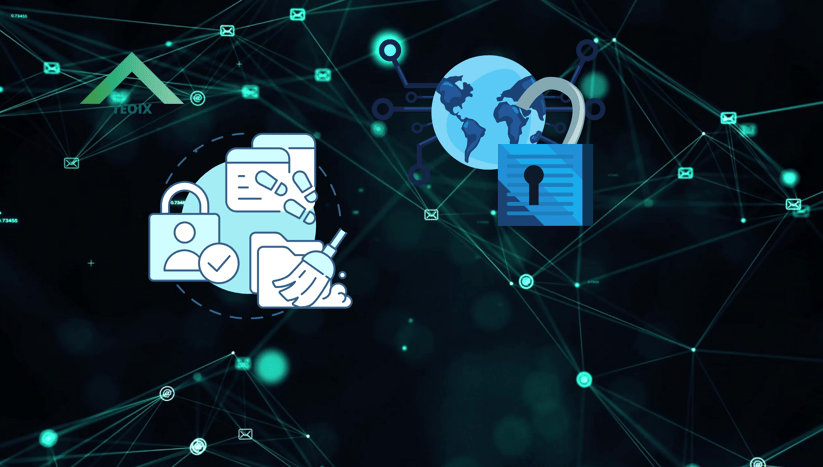Steps to Strengthen Your Data Security: Protecting Your Digital Assets
SECURITY
5/25/20243 min read


In a time where cyberattacks and data breaches happen more frequently, data security has grown to be a top priority for both individuals and businesses. To prevent theft, illegal access, and other harm to sensitive data, data security must be strengthened. This post provides thorough instructions for improving data security, guaranteeing the safety and security of your digital assets.
Conduct a Risk Assessment
Performing a comprehensive risk assessment is the first step towards improving your data security. Determine the kinds of data you manage, its storage location, and the individuals who can access it. Examine any weaknesses in your systems and procedures that hackers might be able to take advantage of. Your understanding of your security posture and the areas that require immediate attention will improve with the help of this assessment.
Implement Strong Access Controls
Data security is fundamentally dependent on access controls. Make sure that sensitive information is only accessible to those who are authorized. To restrict data access based on job duties, use role-based access controls (RBAC). To increase security, employ multi-factor authentication (MFA), which requires users to enter two or more verification factors in order to get access.
Encrypt Sensitive Data
One effective method for safeguarding data while it's in transit or at rest is encryption. Data is rendered unreadable even in the event of its interception or unauthorized access thanks to encryption, which transforms information into a coded format that can only be cracked with the right decryption key. For all sensitive data, including emails, files, and conversations, use robust encryption mechanisms.
Keep Software and Systems Updated
Systems and software that are outdated are open to attacks and exploits. Update all operating systems, programs, and software on a regular basis to the most recent versions, which include security updates and patches. When it is feasible, enable automated upgrades to guarantee prompt defense against emerging threats.
Use Firewalls and Antivirus Software
Antivirus and firewall software are crucial parts of a strong data security plan. By monitoring and managing both incoming and outgoing traffic, firewalls serve as barriers between your internal network and outside threats. By identifying and eliminating harmful software, antivirus software helps to stop infections and data breaches. Make sure they're both properly configured and updated on a regular basis.
Backup Data Regularly
Maintaining regular data backups is essential for recovering data in the event of a system failure or intrusion. Put in place a thorough backup plan that incorporates off-site and on-site backups. Make sure backups are encrypted and routinely verified to confirm their efficacy and integrity. This guarantees speedy and effective data restoration in the event that it becomes necessary.
Educate and Train Employees
A major contributing reason to many data breaches is human error. Provide staff members with training and education on data security best practices, including how to spot phishing emails, make secure passwords, and adhere to security guidelines. Maintaining a security-conscious culture inside your company can be facilitated by holding regular training sessions and providing information on new risks.
Implement Data Loss Prevention (DLP) Solutions
Solutions for data loss prevention (DLP) assist in preventing the loss, improper use, or unauthorized access of sensitive data. DLP systems keep an eye on and regulate data flows, identifying any questionable behavior or possible security breaches. Protect your data by implementing DLP solutions, particularly in settings where there is a lot of data movement.
Monitor and Audit Systems Regularly
To quickly detect and address security incidents, your systems must be continuously audited and monitored. Put in place monitoring systems that record suspicious activity and send out notifications in real time. Regular audits of system configurations, access controls, and security policies will assist in locating vulnerabilities and fixing them before they can be exploited.
Develop and Test an Incident Response Plan
Even with the greatest of intentions, data breaches can happen. You can react swiftly and efficiently to reduce harm if you have a well-defined incident response plan in place. Steps for locating, containing, eliminating, and recovering from a breach should be outlined in the plan. To make sure the plan is effective, test and update it frequently.
Use Secure Communication Channels
Make sure that secure channels are used for all communications, particularly those involving sensitive data. To secure data while it's in transit, use Virtual Private Networks (VPNs), secure chat apps, and encrypted email services. Since public Wi-Fi networks are often infiltrated, it is best to avoid utilizing them for important transactions.
Implement Physical Security Measures
Physical security is just as vital as digital security measures when it comes to data security. Use locks, security cameras, and access controls to safeguard physical access to your servers, workstations, and data centers. When a device holding sensitive data is no longer required, make sure it is disposed of appropriately and stored securely.
Conclusion
Increasing the security of your data is a continuous process that calls for attention to detail, frequent upgrades, and proactivity. You may greatly lower the chance of data breaches and safeguard your digital assets from different dangers by putting these procedures into practice. Keep in mind that data security is a cultural as well as a technical concern that calls for everyone handling sensitive data to be committed to and conscious of it.


